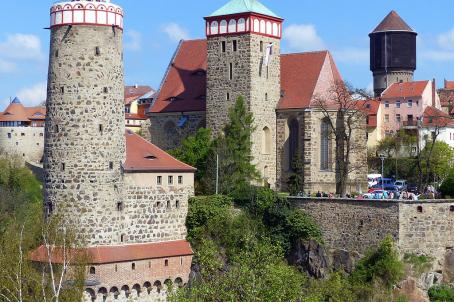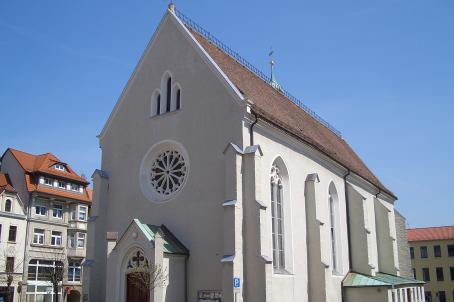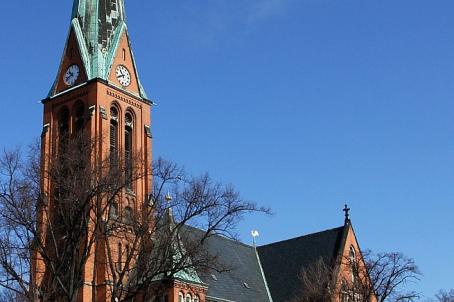St. Peter's Cathedral

St. Peter's Cathedral is the first and largest of the shared churches in Germany. In 1213, Bishop Bruno II established a collegiate chapter there. The building took on its present appearance around 1430, when the late Gothic hall church was extended to the south by a fourth nave. The interior was redecorated in Baroque taste after the town fire in 1634, which also affected the church. In 1664, the bell tower was raised by a Baroque spire. After long quarrels and discussions between Catholics and Lutherans, the council of provosts of the town decides according to an edict of 1543 which regulates the use of the church for both communities.





